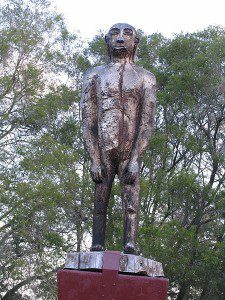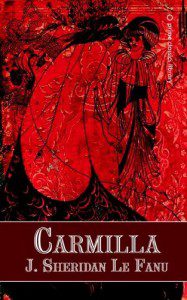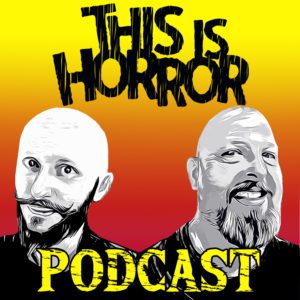 It’s not that I hate vampires and zombies.
It’s not that I hate vampires and zombies.
Like many fans of dark fiction, I was once seduced by Bram Stoker’s Dracula and Le Fanu’s Carmilla and Anne Rice’s Interview with the Vampire. I watched all of Buffy and some of Angel. The first season of True Blood was intriguing, as was its premise, though the show quickly wore thin. I still consider Norman Partridge’s ‘Apotropaics’ (Subterranean, 2008) one of the most refreshing uses of vampire lore in short fiction. Jason Nahrung’s Blood and Dust (2012), what will no doubt prove to be a rollicking vampire yarn set in the Queensland outback, is a novel I’m really looking forward to reading. And James Bradley has written a brilliant essay, ‘Bloody Beauties: The Rise and Rise of Vampire Lit’ (The Australian Literary Review), which has done an excellent job explaining the resilience of vampire fiction over the years.
Also, I adore all of Kelly Link’s zombie stories and gobble new ones up as soon as they’re published. Maureen McHugh’s ‘The Naturalist’ (After the Apocalypse) employs a familiar ‘plague/virus’ trope, but does something so wonderfully horrible with it that it was a joy to read. In a similar vein, Felicity Dowker’s ‘Bread and Circuses’ (the titular story of her 2012 collection) has sparked many a conversation about the new directions zombie tales can take. And the first season of The Walking Dead is on my shelf as we speak, just waiting to be watched.
But.
Even so.
I’m here with a plea on behalf of other night creatures, those poor dark ones who’ve been sadly neglected while narratives about vampires and zombies have reached critical mass:
Why not write more about us?
If you’re keen to write tales of blood-suckers, there are other options. The ‘homunculus’ is commonly treated as a representation of a human, like a doppelganger, a mannequin, or Frankenstein’s monster, but reading Agrippa’s description of this little thing shows that it might well be considered an alternate blood-fiend. Agrippa explains that a homunculus is a tiny, perfectly formed human spawned in a glass jar (which is subsequently buried in a dunghill), who “is fed each day on the arcanum of human blood for a span of 40 weeks…” Sure, it’s easy to see the metaphor for conception and gestation inherent in this description, much as 17th century scholars did when describing the tiny “animalcules” – the miniature people – inhabiting individual sperm. Nevertheless, taken literally, the homunculus could be a chilling addition to horror tales. Just think jars and blood and tiny trapped people and let your imaginations run wild from there…
 Then there are the lamiae (sing. lamia). Ancient Greek mythology refers to lamiae as monstrous, demonic, child-eaters – which is horrific enough in itself. But delving into the motivations behind this devouring of children could provide great fodder for modern horror stories. According to Topsell’s The Historie of Foure-Footed Beastes (1607) a different version of the lamia is “a scaly, four-legged creature, with hoofs behind and paws in front, with a woman’s face, a hermaphrodite with a man’s organ and woman’s breasts.” In addition, some sources say lamiae are shapeshifters who also have the power of invisibility. A blood-sucking, hermaphroditic chimera who can appear and disappear at will, you say? Yes, please!
Then there are the lamiae (sing. lamia). Ancient Greek mythology refers to lamiae as monstrous, demonic, child-eaters – which is horrific enough in itself. But delving into the motivations behind this devouring of children could provide great fodder for modern horror stories. According to Topsell’s The Historie of Foure-Footed Beastes (1607) a different version of the lamia is “a scaly, four-legged creature, with hoofs behind and paws in front, with a woman’s face, a hermaphrodite with a man’s organ and woman’s breasts.” In addition, some sources say lamiae are shapeshifters who also have the power of invisibility. A blood-sucking, hermaphroditic chimera who can appear and disappear at will, you say? Yes, please!
Meanwhile, John Keats’ poem ‘Lamia’ (1819) seems to have influenced the Western collective unconscious by giving form to the lamiae we’re most familiar with in popular culture today. Keats’ lamia is a beautiful woman who transforms into a vampish snake creature, often human above and serpent below:
She was a gordian shape of dazzling hue, / Vermilion-spotted, golden, green, and blue; / Striped like a zebra, freckled like a pard, / Eyed like a peacock, and all crimson barr’d … So rainbow-sided, touch’d with miseries, / She seem’d, at once, some penanced lady elf, / Some demon’s mistress, or the demon’s self…
In Love and Romanpunk, Tansy Rayner Roberts offers two stories that feature lamiae: ‘Lamia Victoriana’ and ‘Julia Agrippina’s Secret Family Bestiary’ (which includes, among others, the basilisk, centaur, harpy, and manticore along with vampires and werewolves) – both of which are welcome additions to lamia lore.
Another well-known, but lately underrepresented, denizen of the dark is the sin-eater, that human vehicle for the sins of the dead. Essentially, the deceased’s sins – or, if you prefer your horror sans Christian connotation, we can call them guilts or sorrows – were transferred through the ritual of eating food that had been in contact with the ‘sinner’s’ corpse. M. John Harrison explored this notion in his story ‘Strange Great Sins’, as did Leigh Blackmore in his piece ‘Soul Food’. The novel Sineater by Elizabeth Massie, which won the 1992 Bram Stoker Award, explores sin-eating in an Appalachian context. What makes this concept perpetually intriguing is the idea of a living person being a scapegoat for the dead – how did they come to be in this position? What do they do with the sins they’ve ingested? And how do they ever shuck this role?
Some other, more esoteric, characters I’d love to see in fiction include the haruspex, one who uses entrails for the purpose of divination. Traditionally, animal parts were used for haruspicy – but one of the joys in writing is creative reinvention. Surely I can’t be the only one whose mind leaps to horror-crime scenarios, where the intestines being read aren’t only animal… Or how about stories featuring capnomancers, those who use smoke the way haruspices use guts? The practice of libanomancy deals more specifically with burning incense to interpret smoke patterns, but a capnomancer is more flexible; (s)he inhales the smoke rising from many different burning things, including human sacrifices… These magic-workers want to breathe the fire’s breath – its ghost, its death. And as great swathes of Australia are currently burning with bushfires, capnomancy seems particularly relevant; pair them with pyromancers, and who knows what havoc they could wreak?
 There are also hags and harpies who, like the early lamiae, were known to suck vitality from children. One Scottish night-prowler, carrying a wizened baby and wearing her trademark green cloak, would enter people’s houses in search of infants’ blood. And in the hills of Leicester, folklore tells us, there is a hag’s cave in which the walls are adorned with the skins of small children… Skins which could, perhaps, be used in stitching together Jenny Hanivers? These shrivelled cockatrices and forged mermaids, which feature in many carnival sideshows, would be almost as disturbing this way as they are in J.J. Irwin’s creepy story ‘Haniver’ (Shimmer 13). And still there are yowies, like the one in Thoraiya Dyer’s ‘Yowie’ (Sprawl), and there are rhapsodomancers – sorcerers who read bits of poetry out at random for oracular purposes – and there are manticores and chimaeras and duppies and corpse-stealing kashas and zashiki-warishis and and and… and too many others to mention in a short column.
There are also hags and harpies who, like the early lamiae, were known to suck vitality from children. One Scottish night-prowler, carrying a wizened baby and wearing her trademark green cloak, would enter people’s houses in search of infants’ blood. And in the hills of Leicester, folklore tells us, there is a hag’s cave in which the walls are adorned with the skins of small children… Skins which could, perhaps, be used in stitching together Jenny Hanivers? These shrivelled cockatrices and forged mermaids, which feature in many carnival sideshows, would be almost as disturbing this way as they are in J.J. Irwin’s creepy story ‘Haniver’ (Shimmer 13). And still there are yowies, like the one in Thoraiya Dyer’s ‘Yowie’ (Sprawl), and there are rhapsodomancers – sorcerers who read bits of poetry out at random for oracular purposes – and there are manticores and chimaeras and duppies and corpse-stealing kashas and zashiki-warishis and and and… and too many others to mention in a short column.
It is possibly easier to depict timeworn creatures than it is to write about, say, basilisks or wendigos. The mythos surrounding vampires and zombies has pervaded popular culture to such an extent that it’s possible to take shortcuts when writing. A throwaway mention of garlic, lack of reflection, a global plague or an inexplicable hunger for braaiinnnssss is enough to let readers instantly know who these monsters are and how they function. But despite their enduring appeal, it might just be time to give vampires and zombies a break. Let them recede into the shadows for a while – and bring some of the more neglected night creatures into the spotlight.
LISA L HANNETT
YOWIE PHOTO BY SEO75
If you enjoyed Lisa L Hannett’s column, please consider clicking through to our Amazon Affiliate links and buying her fiction. If you do you’ll help keep the This Is Horror ship afloat with a very welcome slice of remuneration.
Buy Lisa L Hannett fiction (UK)
Buy Lisa L Hannett fiction (US)











6 comments
Skip to comment form
I agree, I tend to really enjoy the non-usual creature roll call too. The fact my current wip has a chimera as the main character is not a bad thing? (We won’t discuss the mermaid, slyphs, gnomes and salamanders of the other stories – they are in the naughty corner for misbehaving).
Andrew J McKiernan’s story in Midnight Echo “They Don’t Know That We Know What They Know” features a Haruspex along the lines you are talking about! I totally agree, give some of these lesser known monsters some page time!
I love all dark night creatures, and it doesn’t whether they are half snake or half dog or were or vampire I love them all and their tales are so creepy and it keeps you on the edge of your seat and wanting for more. But, I am about to mention a creature that the reading world is not familiar with just yet and I am about to make the creature or creatures known and they are the human spiders. They are intelligent, dark, controlling, luring, resentful and beautiful. The human spider resembles to humans to the point of not really knowing that they are spiders, all except for their two front spider fang teeth that look as human as the rest of their teeth and that they shapeshift at the onset of one offending them. Now, as I stated before I truly do love all dark night creatures and the human spiders are dark night creatures as well but so new and strange to this generation and time and once the world have gotten use to them and have accepted them then they will start to understand the human spiders. The spiders are somewhat blood suckers theirselves and a part of zombie in ways, and they creep and crawl their way from underneath the ground in the country of nor marie. All dark night creatures I believe are linked to the dark son of satan in some way or another, but the count is the best and most creepiest dark night creature of them all.
As the author of a YA werewolf novel I can only plead that it was not a horror novel, but a sort of mediaeval romance with werewolves and the Wild Hunt in it. And this is the case with most YA fiction, at least, these days, where the bloodsucker tends to be the good guy, a wildly gorgeous Byronic hero who has to beat off would-be female amps with a sharpened stake. 😉 My first book was a children’s book on monsters and night creatures, so I have heard of most of those mentioned here, though you can’t use some of them in kids’ books due to sexual implications. Nice column, though. And there are plenty more. Dybbuks, for example. How about the nastier members of the Faerie race? Those, too, alas, are turning up as good guys in YA fiction- the closest I can think of to true Faerie lore are the novels of Melissa Marr, who did her research. But you’re right, there is a lot more out tree to use. Nice column!
I have used harpies in one of my novels…and trolls 😉
I agree, but the vampire and the werewolf have been around far too long and have become beloved by billions all over for to just sweep them under the rug. I say add any new character/ and or creatures of the night and daytime there is, but don’t say hang up the vamp or were just yet, because right now the vamps and weres, etc are shaping america. I think the people would have a lot to say against doing so. I happen to like drac and werewolf and love the episode that are showing on the screen. I say blend in with vamp and werewolves, etc because they are here to stay!